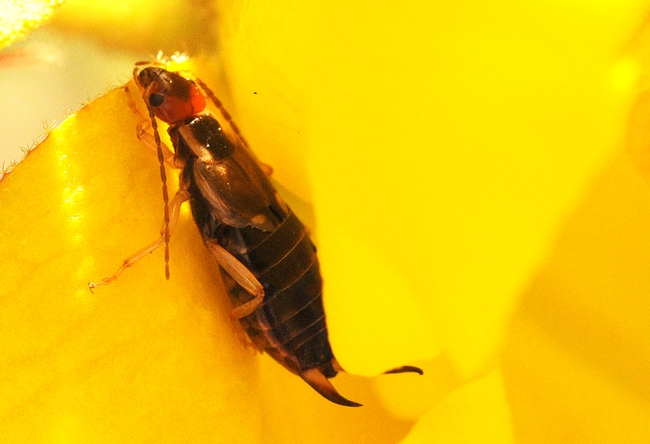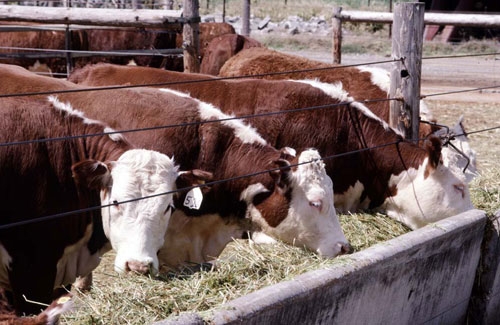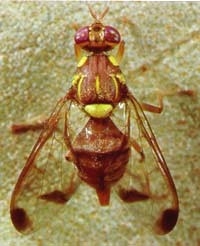From the UC Blogosphere...
Cuts loom for ag and extension programs nationwide
Agriculture and extension programs at land-grant universities around the nation are feeling the impact of university budget cuts, according to an Associated Press story that was picked up by several major newspapers.
“We’re mortgaging our future with some of these cuts,” the story quoted Ian Maw, vice president for food, agriculture and natural resources at the Association of Public and Land-grant Universities.
The story bore a Minneapolis dateline and began with the plight of the University of Minnesota Extension program.
"People may not see the impact tomorrow but they will see long-term that not investing now means we’ll have more problems in the future,” said Beverly Durgan, dean of the University of Minnesota Extension program.
Other universities covered included:
- University of Georgia, where the College of Agricultural and Environmental Sciences recently decided to lay off 18 workers and sell a farm
- Iowa State University, where the extension program is planning for a 6 percent reduction in state funding
- Pennsylvania State University, where extension expects a cut between $5.5 million an $8 million.
Reporter Steve Karnowski also spoke to Dan Dooley, the vice president of agriculture and natural resources for the University of California. Dooley said he expects agriculture at the Berkeley, Davis and Riverside campuses will be cut less than most programs once California’s $9.6 billion deficit is resolved, but it will be hurt.
“Final decisions haven’t been made but the reality is with each reduction we’re going to have to decide what we’re going to do and what we’re not going to do,” Dooley was quoted.
The story was picked up by the Washington Post, the San Francisco Chronicle, the Deseret News and, according to Google News, 168 other media outlets.
Forceps, Please
Forceps, please! Have you ever stopped to admire a blossom and seen forceps protruding? Earwig! We were walking near Mrak...

Tell-tale sign of an earwig. (Photo by Kathy Keatley Garvey)

Earwig exposed. (Photo by Kathy Keatley Garvey)
Invasive melon fly trapped in Fresno County
CDFA officials have trapped a single male melon fly in a Fresno vineyard, sending shivers down the spines of local farmers who produce its target crops, including cucumber, eggplant, squash and tomatoes, according to a report on the CBS Channel 47 news.
The melon fly is native to Asia, but has spread to other parts of the world, including Africa and the Pacific Islands. Melon flies were first found in California in 1956 and have been captured sporadically over the years, but all infestations have been successfully eradicated. Just last year, eight melon flies were found in Kern County. Trapping last month determined that the Kern County population was eradicated, the story said.
Reporter Tony Botti spoke to UC Cooperative Extension farm advisor Richard Molinar about the potential economic damage of a melon fly infestation to small-scale farms. If the pest is found in greater numbers, CDFA will likely impose a quarantine, which stops farmers from moving any of their products out of the area.
"If they are not able to sell, they are going under," Molinar said. "They’ll take a loss this year and many won't be able to survive a loss."

UCCE farm advisor Richard Molinar speaks about melon fly on the CBS Channel 47 news.
Welcome to the GSOB Blog!
We are launching this page to raise awareness about the goldspotted oak borer and it’s threat to oak trees and you. Check out www.GSOB.org You’ll find news, information, resources and tools to help you and your community deal with the GSOB threat. GSOB information is also being featured at the San Diego County Fair as part of the Forest Area Safety Taskforce (FAST) education display. If you’re there, stop by and visit us in the O’Brien building just off the Avenue of Palms and the Landscape and Garden area.
Photo Source: Lorin Lima, UC Cooperative Extension - San Diego
Curing pneumonia in cattle
Bovine respiratory disease - pneumonia in cattle - is the most significant health problem for the beef industry. The disease annually results in the death of more than 1 million animals. In addition to these losses, beef producers spend a significant sum on disease-related medication and labor costs each year.
According to AgInfo.net, raising cattle for specific resistance to BRD was a hot topic at the Beef Improvement Federation Conference earlier this month in Bozeman, Mont. Attendees learned about research under way at UC Davis to find the genetic component to BRD resistance and, eventually, breed out this deadly disease.
This spring, UC Davis announced that USDA awarded the university $2.6 million to carry out research aimed at reducing the incidence of bovine respiratory disease. The goal of the newly funded research project is to integrate research, education and extension activities to improve diagnostics and develop cost-effective genomic and management approaches that reduce the incidence of the BRD in beef and dairy cattle.
The extension component of the project is headed by Alison Van Eenennaam, Cooperative Extension specialist in animal genomics and biotechnology in the UC Davis Department of Animal Science. Van Eenennaam made a presentation at the Bozeman conference about the weight cattle producers should be give to BRD resistance when making selection decisions.

Twenty-nine percent of beef cattle deaths are associated with bovine respiratory disease.










